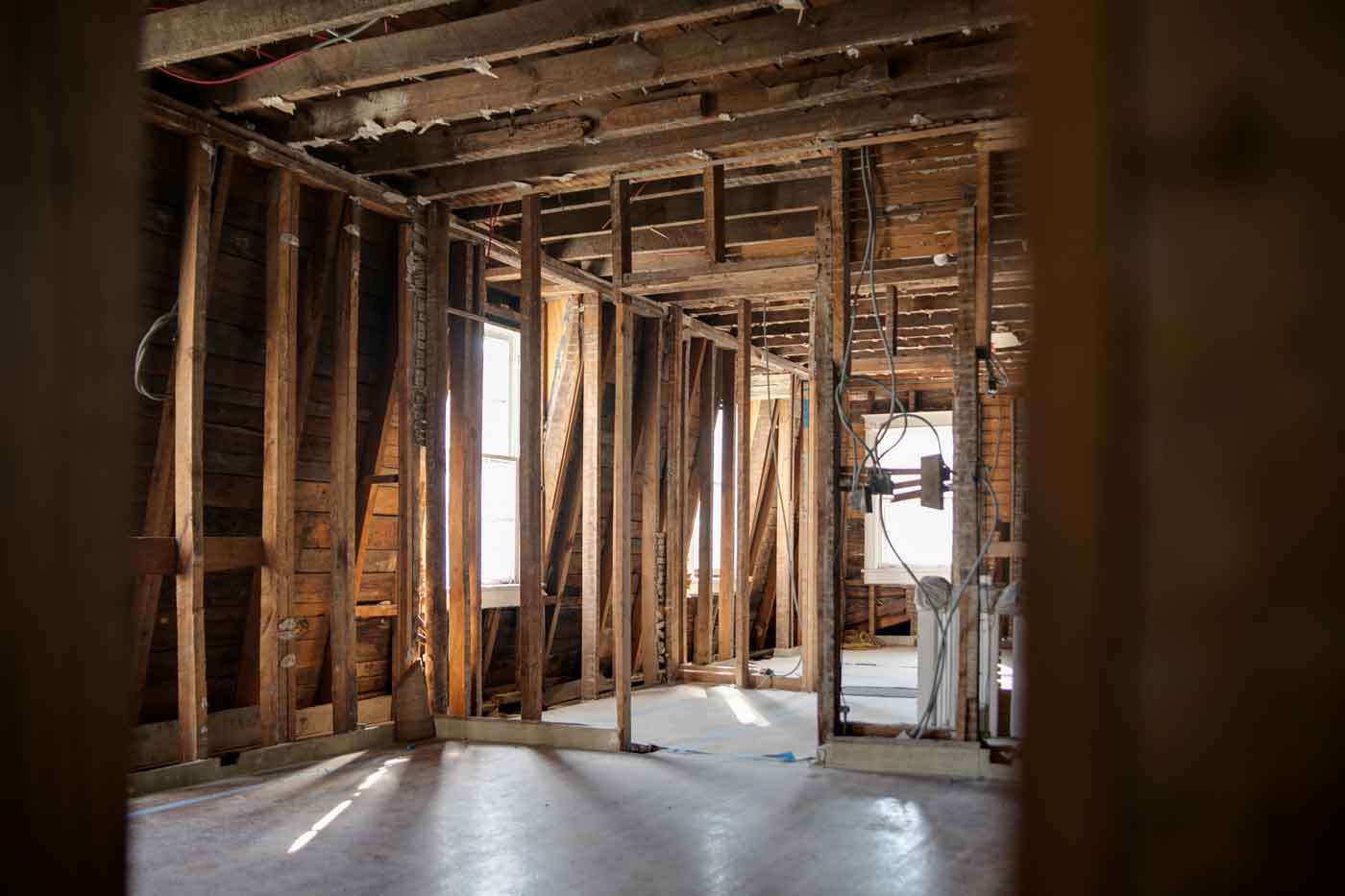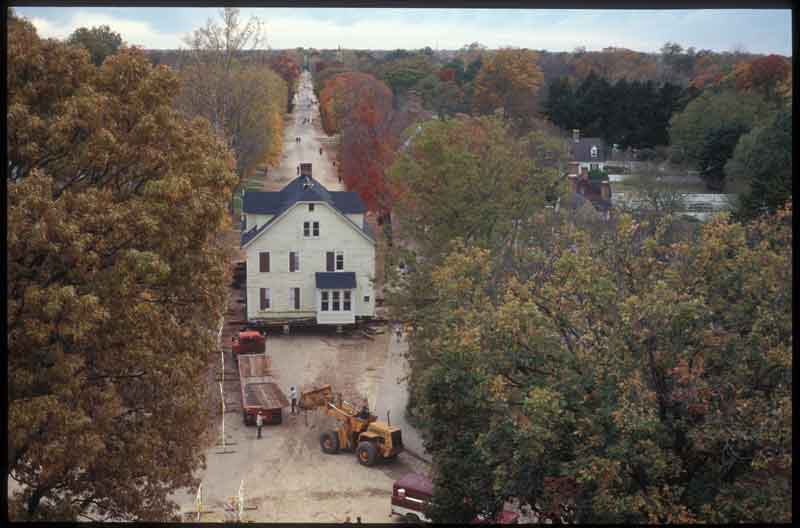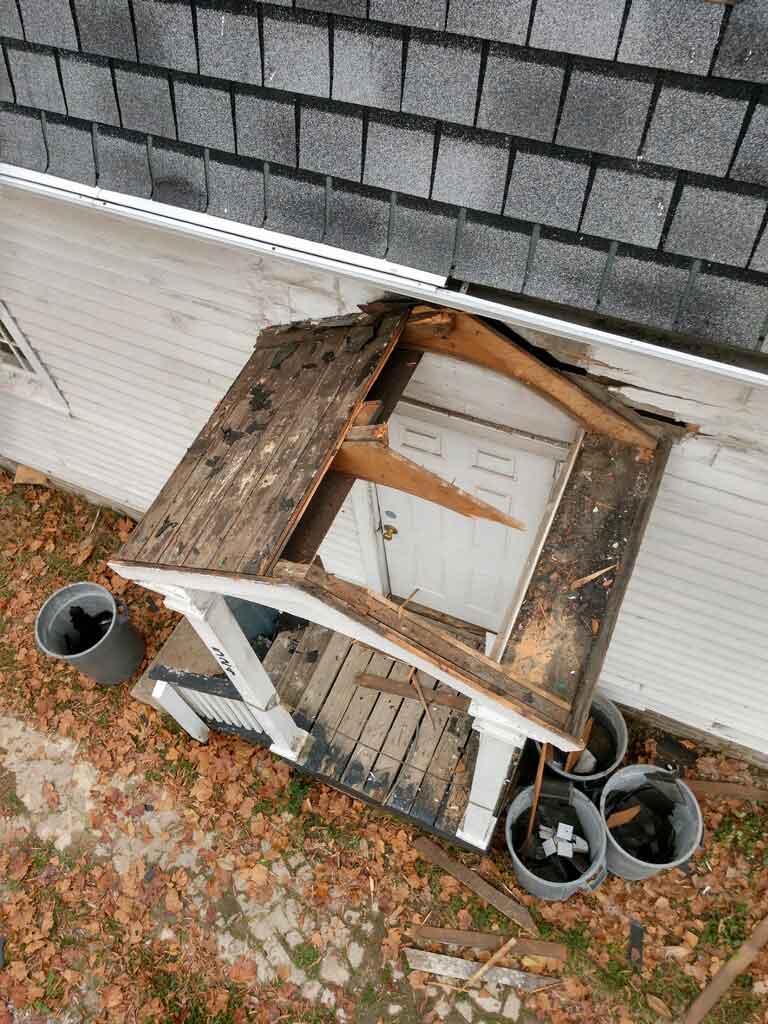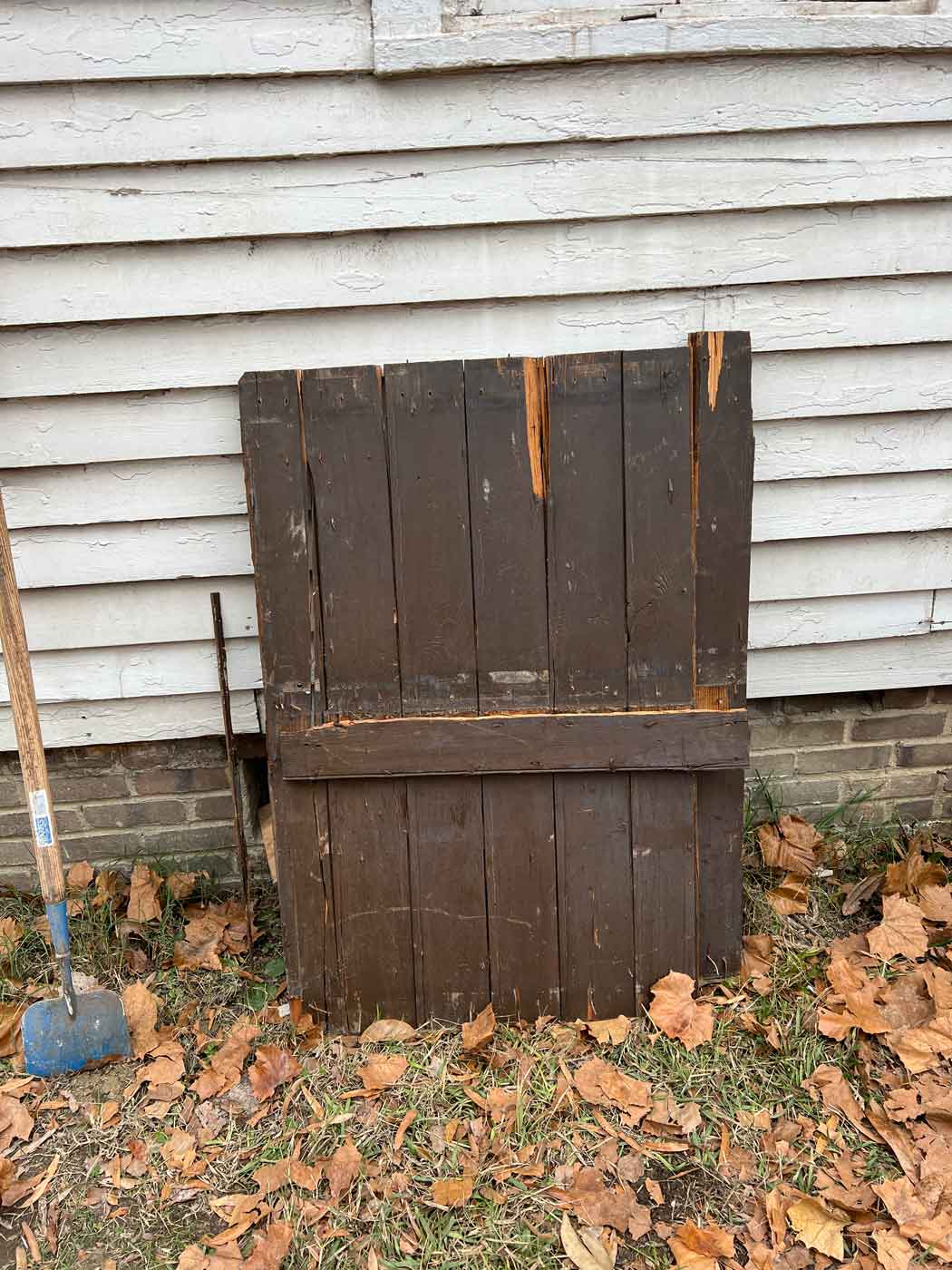In 2022 the Department of Architectural Preservation and Research (DAPR) focused on investigating the Williamsburg Bray School building and began working with a contractor to remove the nineteenth and twentieth centuries additions. This painstaking deconstruction work was done to avoid any damage to the original eighteenth-century frame and surviving architectural details. We have already learned so much from the building, and we are fortunate that so many original features have survived. As we move into 2023, our focus has shifted to the move and restoration of the building.

Currently, the team is in a logistics phase working with the move contractor, Expert House Movers, and an engineer to prepare to move the building. As the modern additions were removed, the DAPR team worked to stabilize the structure adding interior supports and securing plywood to the walls. We are currently completing the stabilization process to protect the original material so the building will be safe to transport to the new site. This work also includes removing any remaining modern features, like the modern chimney on the south elevation and the exterior porches. In fact, we continue to make discoveries as these last modern pieces are removed. Just recently, we found an early board-and-batten door that had been reused in the creation of the twentieth-century porch roof. You can read more about this find on the DAPR Facebook Page. All loose historic material like artifacts found in the walls or fragments like the historic door removed from the building will be cataloged and moved to architectural collections storage.

Once we’ve completed our part of the stabilization, Expert House Movers will soon be mobilizing to prepare the building for the move. They will add additional structural supports, lift it off the current foundation, and secure the original eighteenth-century chimney to the building.

The Bray School will move to its new site on February 10, 2023. On that day the building, already on the trailer, will be moved via truck to its new site. The Colonial Williamsburg Foundation share the route prior to the move. This move will be a delicate process, so while visitors are free to watch, please keep your distance.

Once the building arrives at the new site, it will rest on temporary cribbing supports while repairs and a new brick foundation are completed by preservation masons. Repairs will include the building’s structural framing, and the removal of the non-historic roofline. Currently, the roof is a gambrel shape, whereas historically it was a gable, or A-frame shape. Significant evidence on the rafters and roof framing were found during the investigation, so we are excited to draw upon these findings to reestablish the historic roofline.

Eventually, the building will be moved from the temporary cribbing to the new foundation. From there, the restoration of the interior will begin in advance of the Fall 2024 opening of the Bray School to the public.

We are looking forward to restoring the building to its original form with two end chimneys, the proper roofline, and eighteenth-century massing (floorplan). Once completed, the building will be a visual representation of what the Bray School looked like in its original form from 1760-1765.
Department of Architectural Preservation and Research
The Department of Architectural Preservation and Research is responsible for the preservation and continued study of Colonial Williamsburg’s historic buildings. Along with documentation and annual preventive maintenance efforts, they are currently overseeing the restoration of the Williamsburg Bray School building and the investigation of the Powder Magazine.
Colonial Williamsburg is the largest living history museum in the world. Witness history brought to life on the charming streets of the colonial capital and explore our newly expanded and updated Art Museums of Colonial Williamsburg, featuring the nation’s premier folk art collection, plus the best in British and American fine and decorative arts from 1670–1840. Check out sales and special offers and our Official Colonial Williamsburg Hotels to plan your visit.
